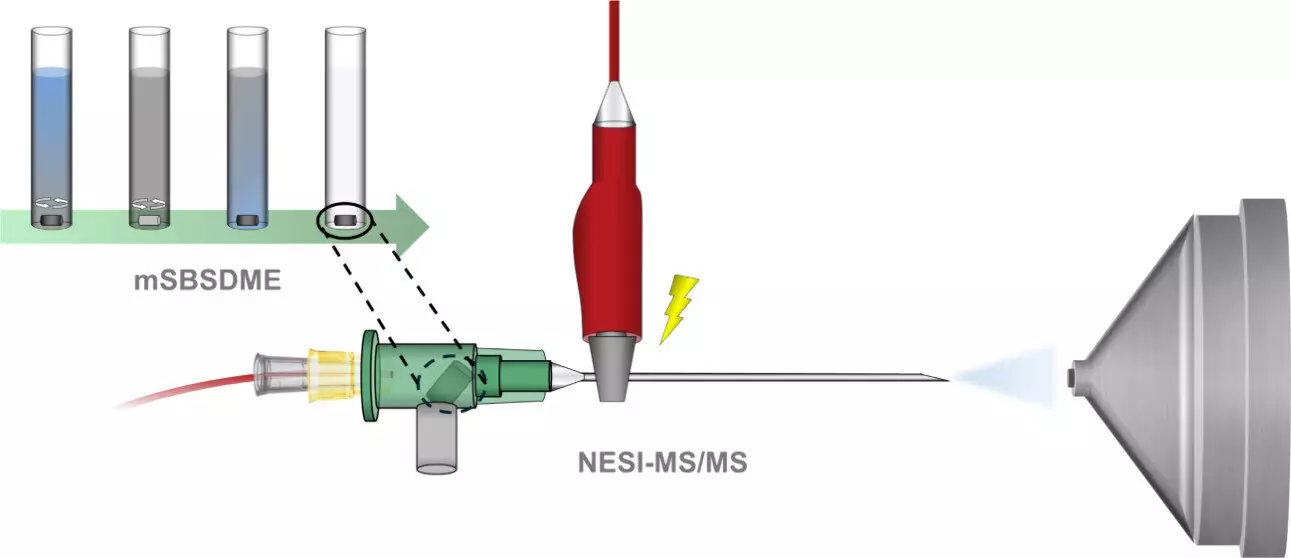Cannabis consumption continues to rise across Europe, marking a critical point in public health and safety. As of 2022, approximately 8% of adults engaged in cannabis use, underscoring the need for effective monitoring and regulation of this widely abused drug. With health implications ranging from addiction to mental health disorders, the pressing challenge lies in detecting THC (Tetrahydrocannabinol) swiftly and accurately. A new technique developed by researchers at the University of Cordoba and the University of Valencia promises to transform this landscape by allowing for quick and efficient THC detection using just a few drops of saliva.
A Shift Towards Non-Invasive Testing Methods
The traditional methods for THC detection often involve blood or urine tests, which can be invasive, inconvenient, and sometimes stigmatizing. The latest research emphasizes the importance of non-invasive techniques that can yield results with minimal discomfort to the individual. Saliva, as an easily collectible bodily fluid, stands out as the optimal choice for such testing methods, providing a clear path toward normalizing cannabis testing without the associated baggage of current practices.
The collaborative research team has developed a method that dramatically simplifies THC analysis, allowing it to be completed in a matter of minutes. By utilizing a mere 0.25 mL of saliva, this innovative approach enables not only rapid detection but also reduces the complexity of the analysis from five steps to just two. The combination of a miniaturized magnetic stirrer bar and dispersive microextraction makes this breakthrough possible, enabling precise THC extraction with minimal sample requirements.
Understanding the Innovative Mechanism
At the heart of this remarkable achievement lies a sophisticated technique known as dispersive microextraction. This method harnesses a specially designed material with magnetic properties that attracts THC molecules present in saliva. As explained by researcher Jaime Millán Santiago, the introduction of a magnetic agitator creates a vortex, effectively dispersing the extraction material throughout the sample. This vortex action is crucial in maximizing contact between the extraction material and THC molecules, ensuring that the extraction process is both efficient and comprehensive.
Once the solid-phase extraction is completed, the process involves transferring the coated stirrer bar into a needle where a high voltage is applied, combined with an organic solvent. This elution step disrupts the bond between the THC and the extraction material, resulting in an electrospray that is then introduced into a mass spectrometer for accurate concentration measurement. This state-of-the-art analytical science not only enhances the speed of results but also fortifies the reliability and precision necessary for effective drug testing.
The Future of THC Detection: Implications and Opportunities
The potential applications of this innovative THC detection method extend beyond mere testing. As highlighted by Professor Rafael Lucena, the research team’s findings could very well become a standard part of routine laboratory analyses. This breakthrough technique is not just a technological marvel; it also carries significant implications for public health policy and law enforcement.
Given the ongoing discussions surrounding cannabis legalization and regulation across Europe, adopting effective testing mechanisms like the one developed by the Cordoba and Valencia teams is essential. Policymakers, health practitioners, and law enforcement agencies need reliable, timely data to make informed decisions regarding cannabis use and regulation. Thus, this technology emerges not just as a scientific achievement but as a pivotal tool in the hands of public health and safety officials.
Addressing the Social Challenges of Cannabis Use
The societal ramifications of cannabis consumption are multifaceted, involving not only health and safety but also broader social implications. The stigmatization of cannabis users often contributes to a lack of understanding and an inadequate approach to drug education and policy. By simplifying the detection of THC and normalizing testing through innovative means, we open the door to a more cohesive dialogue around cannabis use. This breakthrough allows for a shift from punitive measures to informed discussions about responsible usage, public health, and harm reduction strategies.
As cannabis continues to permeate societal norms and legal frameworks, the need for advanced analytical methods becomes increasingly apparent. The collaboration between the academic institutions in Cordoba and Valencia marks a significant step forward in creating accessible, reliable, and efficient tools for cannabis analysis, ultimately contributing to a better understanding of its impacts on health and society. In a world that is shifting towards acceptance and regulation, innovations in detection methodologies like these will be key in shaping an informed and health-conscious approach to cannabis consumption.


Leave a Reply